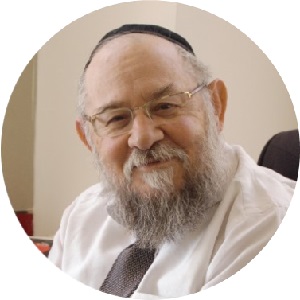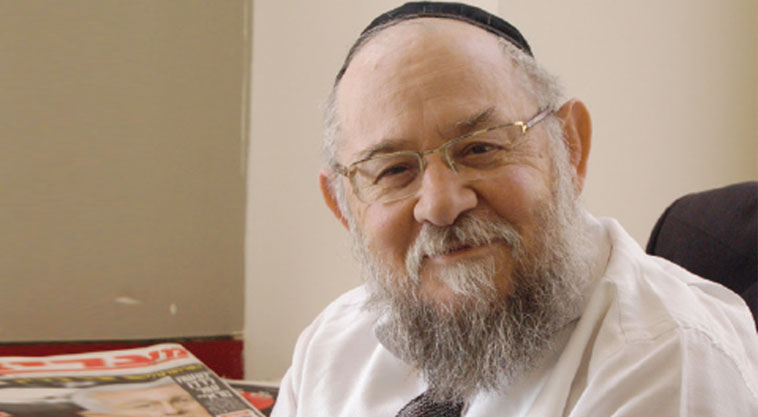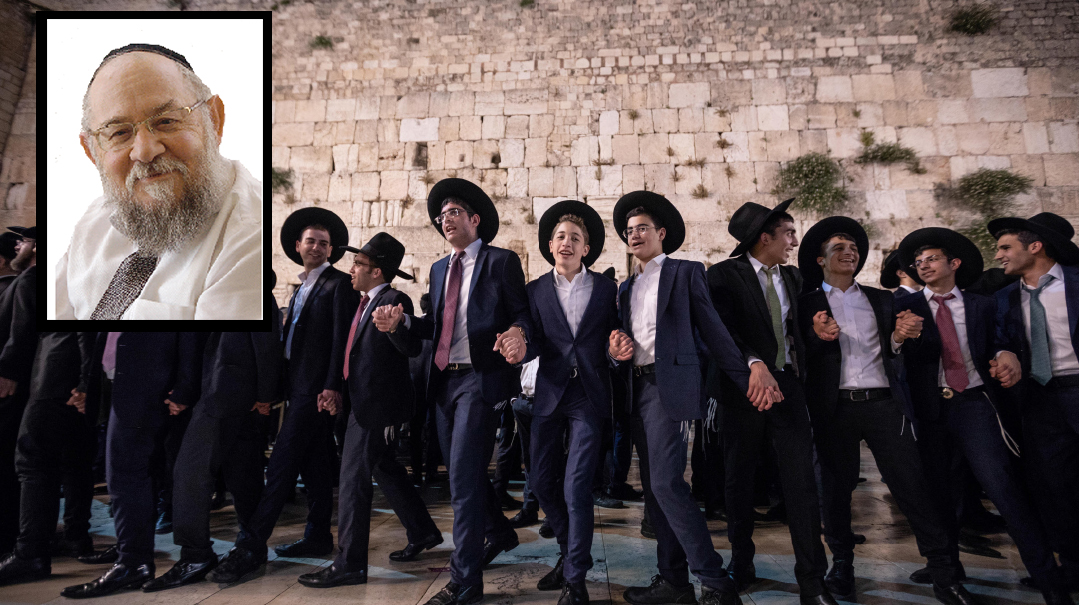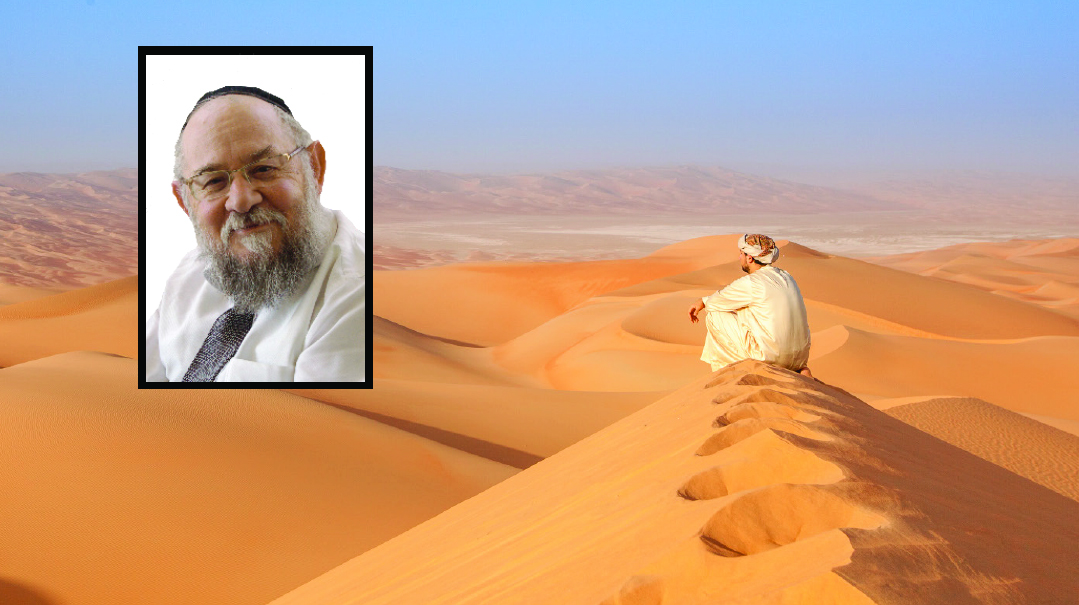The Yeshivah That Never Gives Up

With bareheaded boys in jeans playing guitar, it hardly looks like a regular beis medrash. But Rabbi Yitzy Tendler never gives up on any Jew. Instead, he nurtures the spark until it becomes a full-fledged flame
It all began when Rabbi Yitzy Tendler, a son-in-law of my good friend Rabbi Pesach Lerner, invited me to a particular address in Jerusalem’s Ramat Eshkol neighborhood. “Come visit,” he urged me. “I want you to see with your own eyes why we mustn’t ever give up on any Jewish youth.”
So I duly arrived at the address he’d given me on Rechov Midbar Sinai, where a staircase outside the building led up to a nondescript apartment. Rabbi Tendler greeted me warmly and brought me inside, explaining, “This room is usually just the beis medrash of our yeshivah, Lev Tzion, but temporarily it’s also being used as a dining room.
The seforim lying haphazardly testified that it was indeed a beis medrash, but it certainly wasn’t typical. The three talmidim in the room at that moment didn’t look like they were even dipping their toes in the waters of Torah. Two of them were leafing through newspapers, while the third sat bareheaded, holding a guitar which he had abruptly stopped playing when he noticed me on his turf.
After a brief exchange with this trio of “yeshivah bochurim,” I sat down for a long conversation with Rabbi Tendler, the rosh yeshivah, who described the story behind this very atypical beis medrash. I soon understood that I was sitting in a truly special place, precisely because it was not only out of the box, but could never fit into the box if it tried. The talmidim were boys who’d gone off the derech, all of them from chareidi homes in America or England, and this place offered them a warm, secure environment that runs entirely differently from the standard yeshivah model.
“I don’t need to tell you about the typical trajectory followed by boys like these,” said the Rosh Yeshivah. “They don’t get along in the frum school system for various reasons, their parents and teachers don’t know what to do with them, and they end up on the streets, skidding downhill. I know I’m not telling you anything that you don’t already know — but I think we’re onto something here at Lev Tzion.”
To reach boys like these, who’ve been through the wringer, you can’t follow the conventional methods that work for their more fortunate peers.
Years ago, I was having a conversation with Rabbi Uri Zohar, when I mentioned that there seems to be a striking yeridas hadoros when comparing his and my generation of yeshivah-educated men to today’s young generation, which seems so shallow by comparison. His response was a stunning, simple truth:
“Reb Moshe, there’s no yeridas hadoros. This is just another, different kind of generation!”
I believe that statement can serve as a key to understanding what is incumbent on us. Because our failure to realize this is our big mistake when we try to deal with our youth at risk. We want to bring them back to our standard yeshivos, back to keeping mitzvos the way we do. But we don’t understand their antipathy for the way of life they abandoned when they slammed the door behind them. They know what we’re trying to do, they’ve been there, and they aren’t interested in returning to life within the old structure. There’s a gaping chasm between the parents’ wishes for their child and the child’s feelings, and unless someone has taught the parents to build a bridge, they are helpless as they stand baffled and frustrated before their angry son or daughter. It’s hard to recognize that new generations need a different presentation of our ancient mesorah (and it should be noted that conventional yeshivos have also, to a certain extent, adapted to this need).
But it seems that Yeshivas Lev Tzion has found a way to bridge that gap. The yeshivah recognizes what these troubled youths need and is structured to provide what they haven’t found elsewhere. And as a result, the boys slowly but surely return to Yiddishkeit, Torah, and mitzvos.
“We teach krav maga here,” Rabbi Tendler told me. “We offer music lessons, because they can express themselves better through music. You see, most of them are carrying scars left by various kinds of abuse they’ve suffered in cheder or in yeshivah, and they’ve developed a hard shell that isn’t easy to penetrate. We also employ two psychotherapists who give group and private therapy sessions.”
“And does it help them?” I ask.
“Sure. You can ask the boys themselves.”
I didn’t ask them, of course. I didn’t think they would appreciate someone who could be their grandfather probing their sore spots.
“We take them on a lot of tiyulim, too,” Rabbi Tendler continued. “The rabbanim of the yeshivah go with the boys on these trips — it’s an opportunity to bond informally with the boys, and that closer bond spills over into their relationship in the beis medrash… because yes, we do also have a beis medrash with regular shiurim, only we don’t compel a boy to come in if he doesn’t want to. But I organized a shiur for the boys who don’t want to learn Gemara. Maybe bitter memories from yeshivah are blocking them from tasting the geshmak of Gemara, so I give them a shiur in the Ramchal’s Derech Hashem.”
“The Ramchal, davka?”
“Yes, davka the Ramchal. One of the problems with the chinuch they were getting before was that it was only about the chitzoniyus of performing the mitzvos. Do this, and do that, without any of the depth. So I learn Derech Hashem with them, to show them some of the connections between themselves and the world of Torah and mitzvos.”
“And you’re able to get through to boys who’ve cast off all their mitzvah observance?”
“Well, these are very intelligent bochurim. Once they comprehend what I’m teaching them, they realize that we’re talking about a very serious system, and some of them are strongly affected by that. It helps them to build a new Jewish identity that they can be proud of. One of our projects is called Tzitzis in Auschwitz.”
He noticed my raised eyebrows and continued: “In the summer, we take a trip to Poland. We give them a lot of preparation before they encounter the death camps. And then, when we stand at the gates of Auschwitz, we tell them we have to walk in there as Jews, to show that our enemies’ plans didn’t succeed, that we’re here to proclaim, ‘Am Yisrael chai.’
“Then, I tell them, ‘We have to walk into this accursed place as Jews. Come on, let’s all put on tzitzis.’
“It’s something you have to see to believe. They really feel it, that we’re going to march in there and tell our enemy, ‘You didn’t defeat us!’ And they put on tzitzis, after they took them off years ago. You can’t imagine how that small act brings back their Jewish pride. They put the tzitzis on over their other clothing. Suddenly they have this fierce drive to look like Jews and not like goyim. It’s a tremendous thing…
“Later in the trip we spend Shabbos in Lizhensk, and in such proximity to Rebbe Reb Elimelech, by the time we get to Seudah Shlishis their hard shells crack and they’re able to pour out their hearts and talk about what’s really bothering them. And that revelation helps reconnect them with Am Yisrael and with Torah and mitzvos. Some of our boys have even gone to learn in Mir and other yeshivos.”
And so, as Rebbe Nachman of Breslov says, Ein yeiush ba’olam klal. With the right approach, there is hope for every single Jew.
(Originally featured in Mishpacha, Issue 745)
Oops! We could not locate your form.




